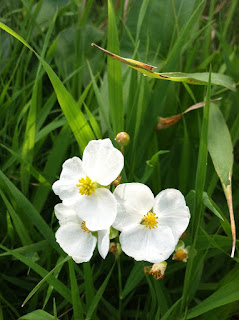 |
| Master Water Stewards identify examples of residential water practices during one of their classes. |
A
Are you looking for an opportunity to get involved protecting water in your community? Consider becoming a Master Water Steward. Now entering its third season, the deadline for the Master Water Stewards program in the District is fast approaching. Ramsey-Washington Metro Watershed District is seeking four Master Water Steward applicants for the coming year.
Applications are due September 30 and can be found here. Classes will begin on October 10. Contact Sage Passi at 612-598-9163 or by email for more information.
Stewards-in-training will participate in classes both online and in person, tour our watershed and identify projects in the community that will reduce water pollution. As part of the certification process, Master Water Stewards work in pairs to design a capstone project and develop an outreach educational activity or event.
 |
| Evan Pugh shares his knowledge about protecting bee habitat while doing maintenance for rain gardens. |
Here is an example of what one of our Master Water Steward teams accomplished this year after completing their training:
Master Water Stewards, Bill Cranford, Rachel Hanks and Phyllis Webster initiated the Adopt-A-Drain program as their capstone project in the Phalen Heights area of St. Paul this spring. They reached out to over 700 household in their neighborhood in order to identify residents who would commit to clearing leaves, dirt and trash regularly from storm drains near their homes and keep them from polluting nearby Lake Phalen and the Mississippi River downstream.
 |
| Rachel Hanks installs an Adopt-a-Drain sign in her neighborhood. |
Rachel says, “It’s gratifying to experience positive results from our efforts to improve water quality. We see clean storm drains as we take our regular walks in the neighborhood. We have engaged with our neighbors and are building a network of people who also desire to keep our local Lake Phalen clean."
Master Water Stewards Program Intro Session at Urban Boatbuilders - September 14
Join Master Water Stewards and Watershed District program staff at Urban Boatbuilders on Thursday, September 14, from 5:30 - 7:00 PM to learn more about this dynamic program. Guests can expect delicious appetizers and a sneak peek at the Urban Boatbuilders workshop, as well as great conversation with the people who know this program best - our stewards. Stewards will be sharing their stories throughout the event. Stop by on your way home from work and stay as long as you’d like. RSVPs appreciated.
 |
| The workshop at Urban Boatbuilders |
Directions and Parking
Urban Boatbuilders is located at 2288 University Avenue W, St. Paul 55114
From the west:
Urban Boatbuilders warehouse is on University, but set back from the road. Turn right on LaSalle and the building will be on your left. Parking is along the back on Myrtle Street.
From the east:
If coming from the east, you'll pass the address and turn around at Raymond to head east on University and take a right on LaSalle. The building will be on your left. Parking is along the back on Myrtle Street.

























